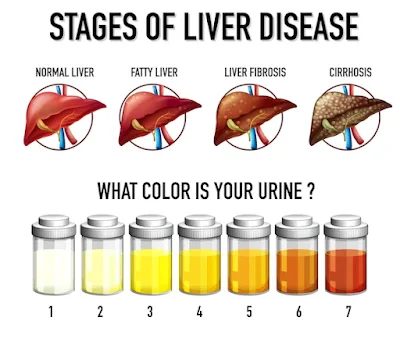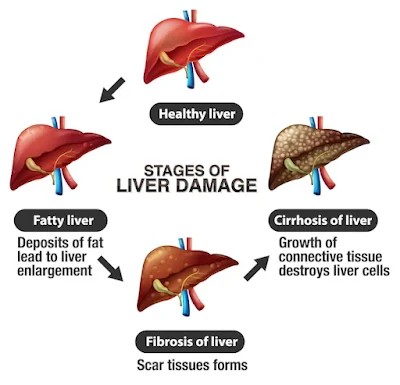The color of your urine can provide important clues about your health, including the possibility of liver disease. Understanding the connection between urine color and liver health can help you identify potential issues and take appropriate action. In this article, we will explore the different colors of urine that may indicate liver disease and what steps you can take to maintain a healthy liver.
What is liver disease?
 |
| Image Credit Goes To Freepik |
Liver disease refers to any condition that affects the liver's structure or function. It can range from mild to severe and can be caused by various factors, including viral infections, alcohol abuse, obesity, and certain medications. Common types of liver disease include hepatitis, cirrhosis, and fatty liver disease. These conditions can lead to symptoms such as jaundice, fatigue, abdominal pain, and changes in urine color. It is important to seek medical attention if you suspect you may have liver disease, as early detection and treatment can help prevent further damage to the liver.
What causes changes in urine color?
 |
| Image Credit Goes To Freepik |
Changes in urine color can be caused by a variety of factors, including dehydration, certain medications, and certain medical conditions. However, one specific condition that can cause changes in urine color is liver disease. When the liver is not functioning properly, it may not be able to properly process bilirubin, a yellow pigment that is produced when red blood cells break down. As a result, bilirubin can build up in the body and cause the urine to become darker in color, often appearing brown or tea-colored. This is known as bilirubinuria and can be a sign of liver disease. Other changes in urine color that may be associated with liver disease include a dark yellow or amber color, which can indicate dehydration, and a cloudy or foamy appearance, which can be a sign of protein in the urine. If you notice any changes in your urine color, it is important to speak with a healthcare professional for further evaluation and diagnosis.
How does liver disease affect urine color?
 |
| Image Credit Goes To Freepik |
Liver disease can affect urine color by causing an increase in the levels of bilirubin in the body. Bilirubin is a yellow pigment that is produced when red blood cells break down. Normally, the liver processes bilirubin and excretes it in the bile, which is then eliminated from the body through the digestive system. However, when the liver is not functioning properly, it may not be able to process bilirubin effectively, leading to a buildup in the body. This excess bilirubin can then be excreted in the urine, causing it to become darker in color. In addition to bilirubinuria, liver disease can also cause other changes in urine color, such as a dark yellow or amber color due to dehydration, and a cloudy or foamy appearance due to the presence of protein in the urine. If you notice any changes in your urine color, it is important to consult a healthcare professional for proper evaluation and diagnosis.
Common urine colors associated with liver disease.
 |
| Image Credit Goes To Freepik |
There are several common urine colors that can be associated with liver disease. One of the most noticeable changes is a dark yellow or amber color, which can indicate dehydration. This is because when the liver is not functioning properly, it may not be able to produce enough urine, leading to concentrated urine that appears darker in color. Another common urine color associated with liver disease is a brownish or tea-colored urine, which can be a sign of liver damage or liver disease. This is caused by the presence of bilirubin in the urine, which is a yellow pigment that is normally processed by the liver. When the liver is not functioning properly, bilirubin can build up in the body and be excreted in the urine, causing it to appear brownish or tea-colored. If you notice any changes in your urine color, it is important to consult a healthcare professional for further evaluation and diagnosis.
When should you see a doctor about changes in urine color?
 |
| Image Credit Goes To Freepik |
If you notice any changes in your urine color, especially if it is consistently dark yellow, amber, brownish, or tea-colored, it is important to see a doctor for further evaluation. These changes can be a sign of liver disease or other underlying health issues. Additionally, if you experience other symptoms such as abdominal pain, jaundice (yellowing of the skin and eyes), fatigue, or unexplained weight loss, it is important to seek medical attention as soon as possible. A healthcare professional will be able to conduct tests and provide a proper diagnosis and treatment plan if necessary.
Comments
Post a Comment